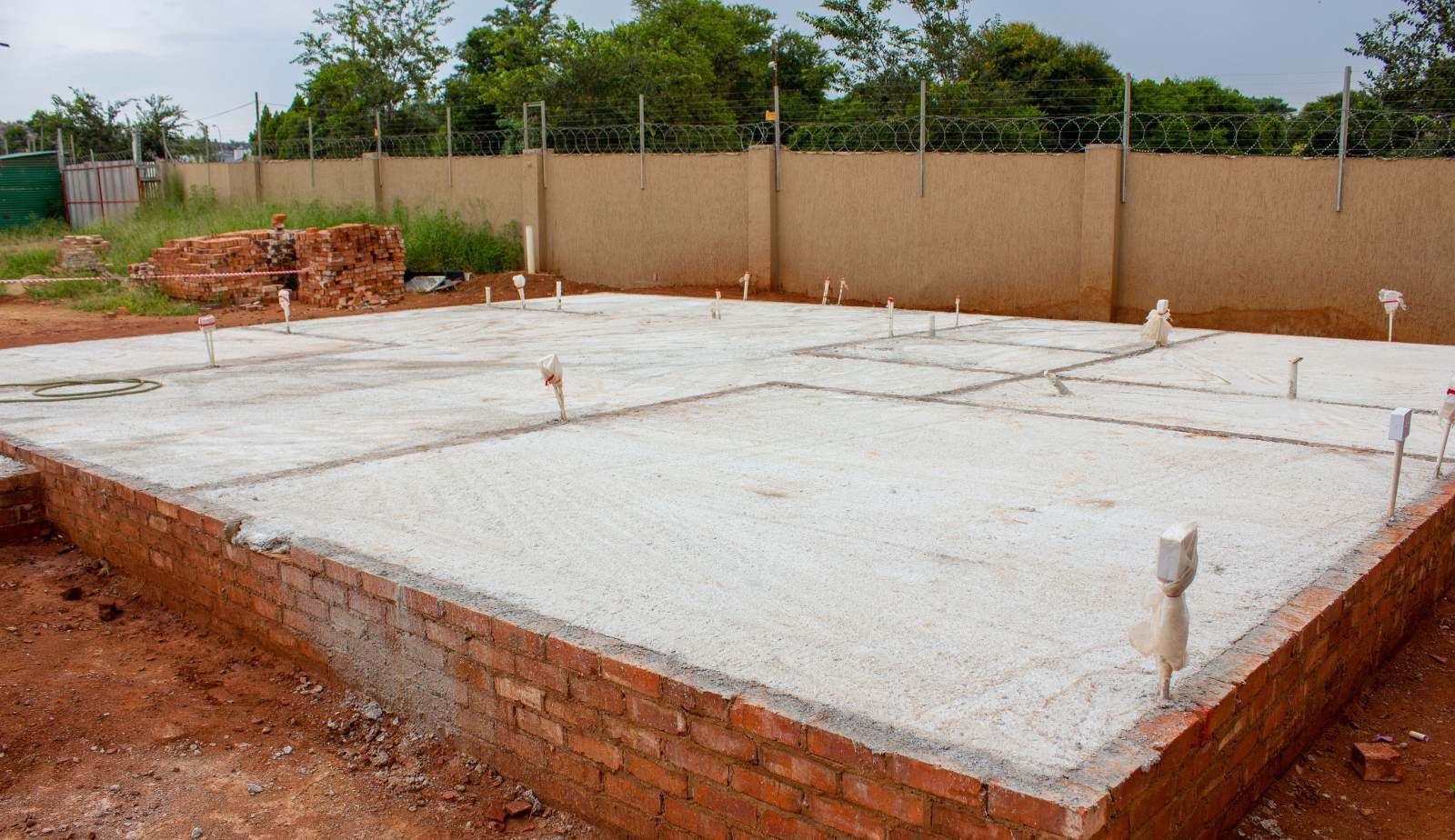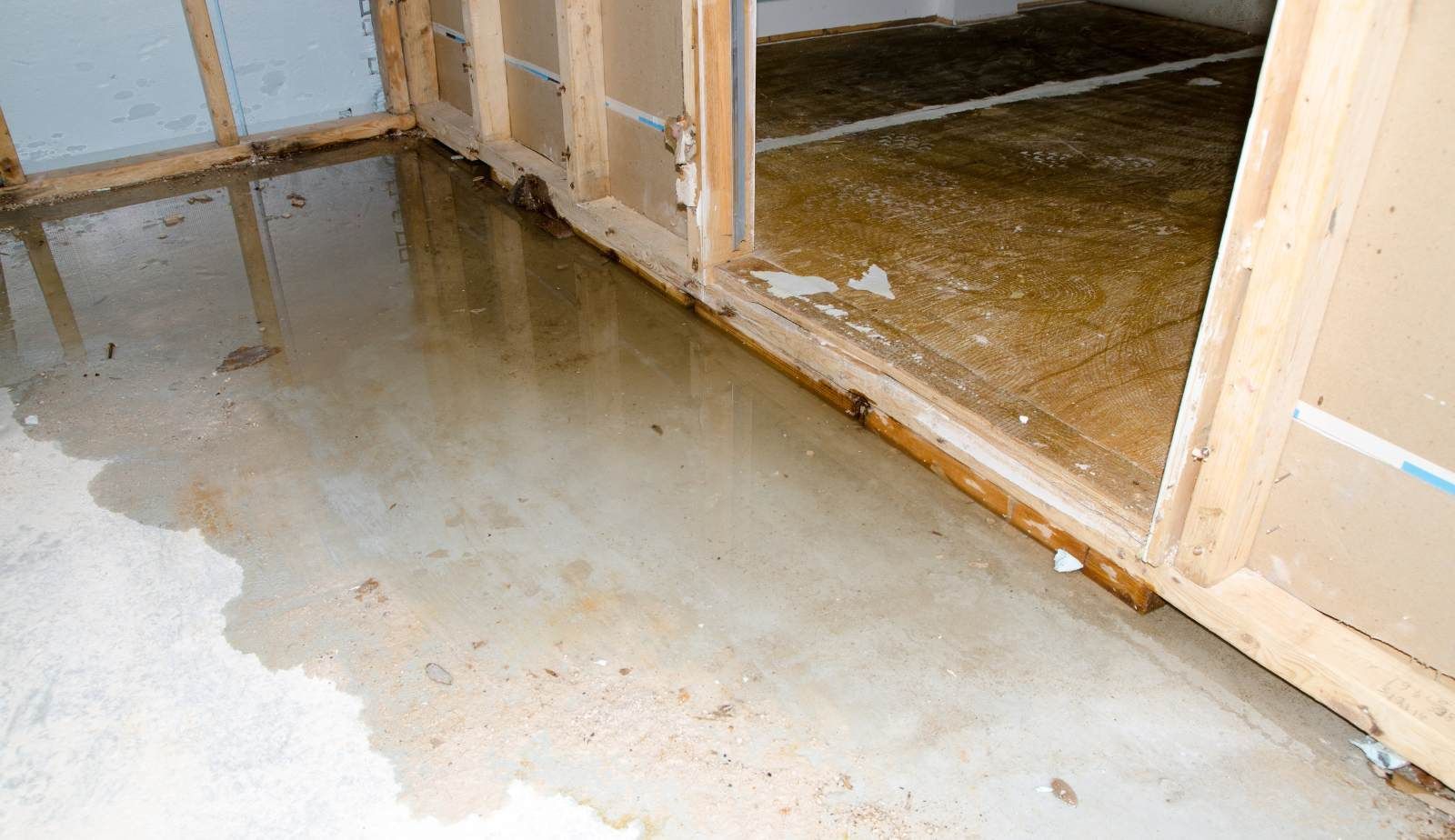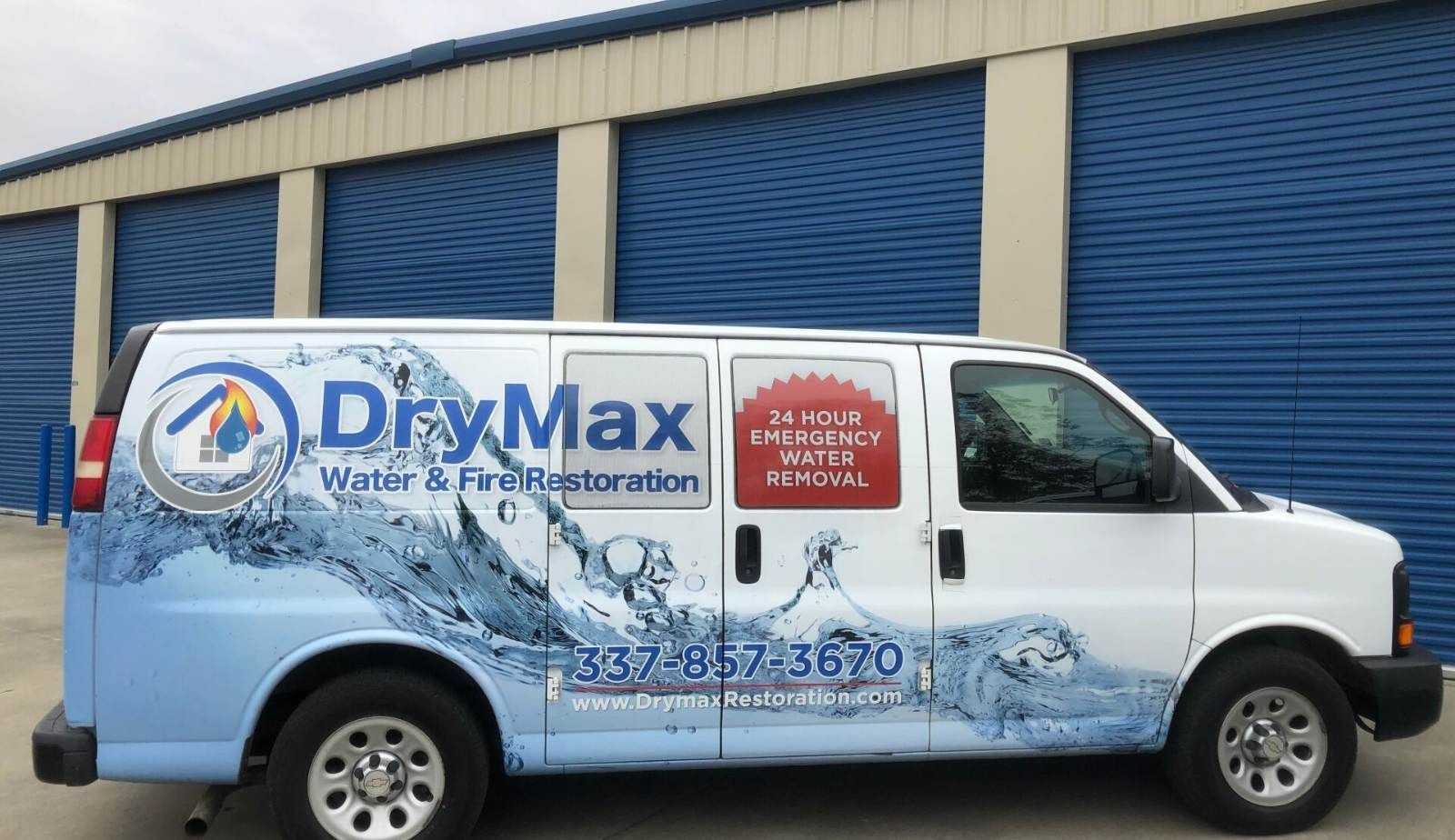Slab Foundation Water Damage: Essential Insights for Louisiana Homeowners from Drymax
Slab foundations are common in Louisiana, but they come with unique risks, particularly concerning water damage. Homeowners in this region face challenges from the high humidity, frequent rain, and underlying soil conditions, which can lead to severe issues if left unaddressed. Understanding how to identify and mitigate water damage is essential for protecting one’s investment and ensuring the structural integrity of their home.
Many homeowners might not realize that water can accumulate beneath the concrete slab, leading to problems like mold growth and structural decay. Regular monitoring for signs of water intrusion is crucial. Addressing concerns early can prevent costly repairs and ensure a safe living environment.
This article will explore the essential aspects of slab foundation water damage, including its causes, signs to watch for, and preventive measures that homeowners should consider. Knowledge in this area can empower homeowners to take proactive steps in safeguarding their properties from the hidden dangers of water damage.
The Unique Risks of Slab Foundation Water Damage in Louisiana
Louisiana's unique environmental conditions pose specific challenges for slab foundations. This section explores why slab foundations face a heightened risk of water damage, the influence of the humid climate, and how they differ from other foundation types.
Why Slab Foundations Are Prone to Water Damage
Slab foundations are particularly vulnerable to water damage due to their direct contact with the ground. This close proximity means that any water intrusion from rainfall or flooding can quickly affect the foundation's integrity.
Moreover, slab foundations lack a crawl space, leaving no buffer between the structure and potential moisture sources. They can absorb water directly from the soil, leading to issues such as cracking and settling as the soil erodes.
Homeowners must be vigilant about identifying leaks, as they can go unnoticed until significant damage occurs. Consequently, proactive maintenance is vital for slab foundations in areas like Louisiana.
Impact of Louisiana's Humid Climate
The humid climate of Louisiana exacerbates the risks associated with slab foundations. High humidity levels promote the growth of mold and mildew, which can thrive in damp environments. This not only affects structural integrity but also poses health risks for residents.
Heavy rainfalls common in the region can lead to water pooling around homes, increasing the likelihood of water intrusion beneath the slab. As water saturates the ground, it can compromise the soil's stability, leading to foundation settling or shifting.
Recognizing weather patterns and seasonal changes is crucial for homeowners to implement preventative measures against moisture buildup.
Key Differences from Other Foundation Types
Unlike pier-and-beam foundations, which elevate structures above ground level, slab foundations sit directly on the soil. While this can provide a stable base, it also means that any moisture issues affect the house directly.
Pier-and-beam foundations offer ventilation and drainage benefits that slab foundations lack. This makes them less susceptible to water damage and related complications.
Understanding these differences can guide homeowners in making informed decisions about maintenance and repairs. By recognizing the unique vulnerabilities of slab foundations, residents can adopt appropriate strategies to mitigate water damage risks.
Identifying Signs of Water Damage in Slab Foundations
Detecting water damage in slab foundations is critical for maintaining the integrity of a home. Homeowners should be vigilant for specific signs that indicate potential issues that could lead to significant repairs and expenses.
Cracks in Walls and Floors
Cracks in walls and floors are among the most common indicators of foundation problems. When water seeps into the foundation, it can cause concrete to weaken and shift, resulting in visible cracks. These fissures often appear near doorways, windows, or where walls meet the floor.
Homeowners should pay attention to the size and direction of these cracks. Horizontal cracks may signal more severe structural issues compared to vertical ones, which can be less concerning. Regular inspections can help catch these signs early, allowing for timely intervention.
Uneven or Sagging Floors
Uneven or sagging floors can point to significant underlying issues with a home’s slab foundation. A stable foundation should provide a level surface, but water intrusion can lead to soil erosion beneath the slab, causing it to settle unevenly.
Homeowners may notice spots where the floor feels higher or lower than the surrounding area. Creaking or popping noises when walking can also be a red flag. If these signs are observed, it is essential to consult a professional to assess the situation before further damage occurs.
Musty Odors and Water Stains
Musty odors and water stains are clear indicators of moisture issues within a home. If water seeps into the foundation, it can create the perfect environment for mold and mildew to thrive.
Homeowners should check for discoloration or dark spots on walls or ceilings, particularly in areas closest to the foundation. These stains often indicate where water has collected or leaked, signaling the potential for more extensive damage. Addressing moisture promptly can prevent health risks associated with mold exposure.
Low Water Pressure and Rising Utility Bills
Low water pressure can be an unexpected sign of a slab leak. When water escapes from a pipe beneath the foundation, it may not only reduce pressure but also lead to increased utility bills.
Homeowners should be alert for sudden drops in water pressure while using taps or appliances. If noticeable increases occur in water bills without an apparent cause, it is vital to investigate. A professional plumber can help identify the source of the leak and provide effective solutions to mitigate further damage and costs.

Common Causes of Slab Foundation Water Damage
Water damage in slab foundations can arise from various issues, primarily plumbing leaks, surface water intrusion, and soil movement. Understanding these causes is essential for homeowners to effectively safeguard their properties.
Plumbing Leaks Beneath the Slab
One of the most significant causes of slab foundation water damage is plumbing leaks beneath the concrete. These leaks often stem from aging pipes or faulty installations.
When a leak occurs, water can accumulate unnoticed beneath the slab, leading to moisture buildup. This moisture can weaken the foundation over time.
Early detection is crucial; spotting signs such as damp spots on floors or unusually high water bills can help homeowners address leaks promptly. Ignoring these signs may result in more extensive damage and costly repairs.
Surface Water Intrusion
Surface water intrusion is another major contributor to slab foundation issues. Heavy rainfall or poor drainage systems can direct water towards the foundation, creating pressure against the slab.
Water that pools around the foundation can seep into cracks or gaps, leading to significant water intrusion. Homeowners should assess the grading of their property to ensure proper drainage away from the home.
Installing gutters, downspouts, and drainage systems can help manage surface water effectively. Maintaining landscaping and ensuring downspouts direct water away are simple but vital preventative measures.
Soil Movement and Foundation Shifts
Soil movement is a natural occurrence that can greatly impact slab foundations. Changes in moisture levels in the soil can cause it to expand or contract, leading to foundation shifts.
This movement can create cracks in the slab, allowing water to enter and further compromise structural integrity. Regions with clay or expansive soils are particularly vulnerable to these shifts.
To mitigate risks, homeowners should monitor their landscaping and irrigation systems. Regular inspections of the foundation for cracks and changes can promote early detection, thus preventing severe damage down the line.
Consequences of Water Damage to Your Home's Foundation
Water damage to a home’s foundation can lead to severe and often costly repercussions. The most significant consequences include loss of structural integrity, the potential for mold growth and associated health hazards, and a decline in property value. Understanding these impacts is crucial for homeowners.
Loss of Structural Integrity
When water infiltrates a slab foundation, it weakens the concrete. Over time, this exposure can lead to cracks, settlement, or even heaving of the foundation.
- Cracking: Water causes the soil beneath the foundation to expand and contract. This movement can create fissures that compromise stability.
- Settlement: As the soil becomes saturated, it may not support the foundation adequately, leading to sinking or uneven floors.
- Shifting: A compromised foundation may shift under weight, causing additional stress on walls, windows, and doors.
Addressing these issues promptly is vital; neglecting them can lead to more extensive structural damage.
Mold Growth and Health Hazards
Moisture in the foundation usually leads to mold growth. Areas remaining damp become breeding grounds for both mold and mildew.
- Health Risks: Mold can significantly affect air quality, triggering allergies and respiratory issues. Some types of mold produce mycotoxins that can pose serious health risks.
- Odors: Mold growth can generate musty odors, which may permeate throughout the home.
- Hidden Damage: Mold often develops in concealed spaces, making it difficult to detect until significant damage occurs.
Preventing moisture intrusion and addressing leaks is essential for safeguarding not just the home, but also the health of its occupants.
Decline in Property Value
The presence of water damage and its consequences can severely impact a home's market value. Potential buyers may be deterred by signs of foundation issues.
- Inspection Concerns: Homes with visible damage may fail inspections, leading to lower offers from buyers.
- Repair Costs: Future repair expenses can discourage prospective buyers, as they often prefer homes requiring fewer immediate repairs.
- Market Perception: Homes with mold or structural damage often face stigma, resulting in extended time on the market and reduced selling prices.
Addressing water damage effectively can help maintain, or even increase, property value and appeal in a competitive marketplace.

Hidden Dangers and Early Warning Signs
Identifying hidden dangers in slab foundations is essential for Louisiana homeowners. Early signs of water damage can prevent costly repairs and protect the integrity of the home.
Subtle Moisture Problems
Moisture issues can be elusive and may not be immediately apparent. Homeowners should be alert to a few key indicators:
- High Humidity Levels: Elevated indoor humidity can suggest underlying moisture problems, impacting air quality.
- Peeling Paint or Wallpaper: This can signal that moisture is trapped within the walls, working its way from the foundation.
- Water Stains: Presence of water stains on walls or floors is a clear indication of leaks. They often indicate that water has been present long enough to cause damage.
These issues can indicate more significant problems beneath the surface. Early detection can help prevent further complications.
Standing Water Beneath the Home
Standing water is a serious concern for slab foundations, as it can lead to significant structural issues. Homeowners should regularly inspect for the following signs:
- Pooling Water: Any accumulation of water around the foundation can indicate poor drainage or a leak.
- Odors: Musty smells often accompany standing water and the mold that thrives in it, impacting indoor air quality.
- Insect Infestations: Increased insect activity near the foundation can indicate moisture problems.
Taking swift action at the first sign of standing water can significantly reduce long-term damage.
Visual and Sensory Clues
Visual and sensory indicators often reveal hidden issues that homeowners should not ignore:
- Cracks in Walls or Flooring: These can signal that the foundation is shifting due to excess moisture. Slab leaks can exacerbate these cracks.
- Warm Spots on Floors: Areas that are unexpectedly warm may indicate a leaking hot water line beneath the slab.
- Visible Mold Growth: Any signs of mold are a direct indicator of excessive moisture. This can lead to health issues and requires immediate attention.
These clues often serve as a warning to act before the problems escalate into costly repairs. Prompt awareness can mitigate further damage and ensure a safer living environment.
Professional Assessment and Repair Solutions
Timely professional assessment is crucial for addressing water damage in slab foundations effectively. By understanding the importance of inspections, recognizing when to involve a plumber, and exploring modern leak detection methods, homeowners can protect their property and ensure long-term stability.
Inspection by Foundation Specialists
Foundation specialists play an essential role in identifying the signs of foundation damage. They possess the expertise to conduct comprehensive inspections focused on various issues, such as cracks, settling, and moisture intrusion.
During an inspection, professionals may use tools like laser levels to check for elevation changes that indicate shifting. Homeowners should expect a detailed report outlining the findings, recommended repairs, and estimated costs. Regular inspections are particularly vital in Louisiana, where high humidity and heavy rainfall can exacerbate water problems.
When to Call a Professional Plumber
Timely intervention by a professional plumber can mitigate water damage significantly. Homeowners should reach out to plumbing experts when they notice recurring leaks, unexplained increases in water bills, or signs of mold growth.
A plumber can assess the integrity of plumbing systems and detect leaks that may not be visible. They have the tools necessary for diagnosing hidden problems, such as infrared cameras and moisture meters. Engaging a plumber early can prevent further foundation damage and ensure the home remains safe and stable.
Modern Leak Detection Methods
Innovation in leak detection has transformed how professionals identify water issues in slab foundations. Techniques such as acoustic listening devices allow specialists to pinpoint leaks with precision, even in inaccessible areas.
Another effective method includes thermal imaging, which reveals temperature variations related to water accumulation. These modern approaches lead to quicker, more accurate assessments, facilitating timely repairs. Early detection is crucial in preventing extensive foundation damage and costly repairs down the line.
Homeowners in Louisiana must stay proactive about both inspection and repair to safeguard their properties from the persistent threats posed by this state’s unique climate.
Preventing Slab Foundation Water Damage for Louisiana Homeowners
Being proactive is crucial for Louisiana homeowners to prevent slab foundation water damage. This involves regular maintenance, effective drainage strategies, and moisture management techniques to protect the integrity of their homes.
Routine Maintenance and Inspections
Regular maintenance and inspections are essential in identifying potential moisture problems early. Homeowners should check for visible cracks in walls or floors that may indicate foundation issues.
Conduct routine checks of plumbing systems to catch leaks promptly. Inspect gutters and downspouts to ensure proper water diversion away from the foundation.
Keeping the area around the foundation clear of debris also helps facilitate drainage. Establish a twice-yearly inspection schedule to stay ahead of any water intrusion issues.
Drainage and Landscaping Best Practices
Effective drainage systems are vital due to Louisiana's heavy rainfall. Installing French drains can help direct water away from the foundation. Homeowners should also consider using sump pumps in areas prone to flooding.
Proper landscaping can further assist in preventing water accumulation. Elevating flower beds and using native plants create natural barriers against excess moisture.
Ensure that grading slopes away from the foundation. Maintain at least a 6-inch gradient for optimal drainage. These practices reduce the risk of foundation problems arising from water intrusion.
Tips for Managing Moisture Indoors
Managing indoor moisture is equally important in preventing slab foundation damage. Use dehumidifiers in high-humidity areas to keep moisture levels in check. They can help mitigate mold growth, which can negatively impact both health and home structure.
Regularly ventilate areas like basements and bathrooms where moisture tends to accumulate. Opening windows and using exhaust fans can significantly reduce humidity levels.
Homeowners should monitor indoor plumbing for leaks and repair them immediately. Insulating pipes can also prevent moisture build-up due to condensation.

Frequently Asked Questions
Homeowners often have pressing concerns about water damage in slab foundations. The following questions address the effects of water, signs of damage, prevention strategies, steps to take in the event of damage, detection of plumbing leaks, and the associated repair costs.
How does water affect the integrity of slab foundations over time?
Water exposure can degrade slab foundations by causing soil erosion or expansion. Over time, excessive moisture levels may lead to cracking or settling, impacting the stability of the entire structure. Continuous cycles of wetting and drying can exacerbate these issues, making timely intervention essential.
What are the common signs of water damage in slab foundations?
Indicators of water damage include visible cracks, uneven floors, and moisture accumulation around the foundation. Homeowners may also notice mold growth or a musty odor. Detecting these signs early can significantly mitigate further complications.
How can a homeowner prevent water damage to a slab foundation?
To prevent water damage, homeowners should ensure proper drainage systems are in place. Regular inspection of gutters, downspouts, and grading around the home can direct water away from the foundation. Additionally, addressing any plumbing issues promptly is crucial for prevention.
What steps should be taken if water damage is suspected in a slab foundation?
If water damage is suspected, a thorough inspection should be conducted. Homeowners should look for visible cracks or water stains. Consulting a professional contractor for further evaluation and remediation may be necessary to address any underlying issues.
How are plumbing leaks detected in a home with a slab foundation?
Detecting plumbing leaks in slab foundations often requires specialized methods. Homeowners may notice an increase in water bills or damp spots on the floor. Professionals commonly use infrared cameras or acoustic listening devices to identify hidden leaks beneath the concrete.
What are the cost implications of repairing a slab foundation with water damage?
Repair costs for slab foundations with water damage can vary widely based on the extent of the damage. Minimal repairs may be relatively affordable, while extensive damage could require significant investment. It is essential for homeowners to evaluate repair options and seek multiple estimates from contractors before proceeding.
You might also like
DryMax Restoration Blogs




